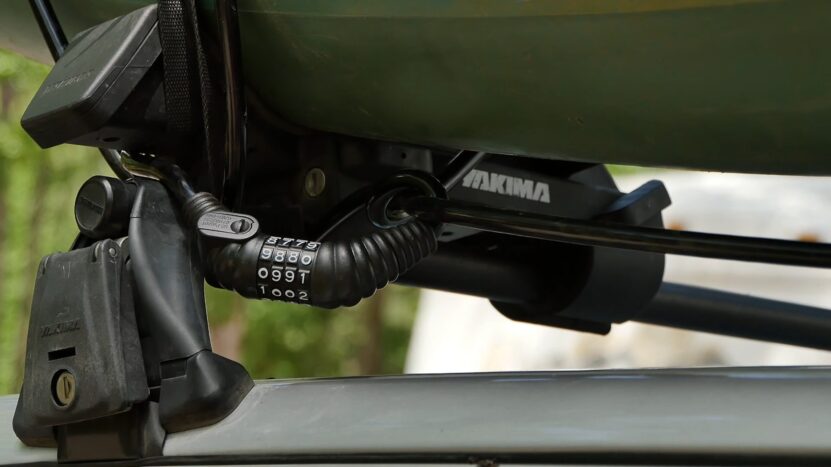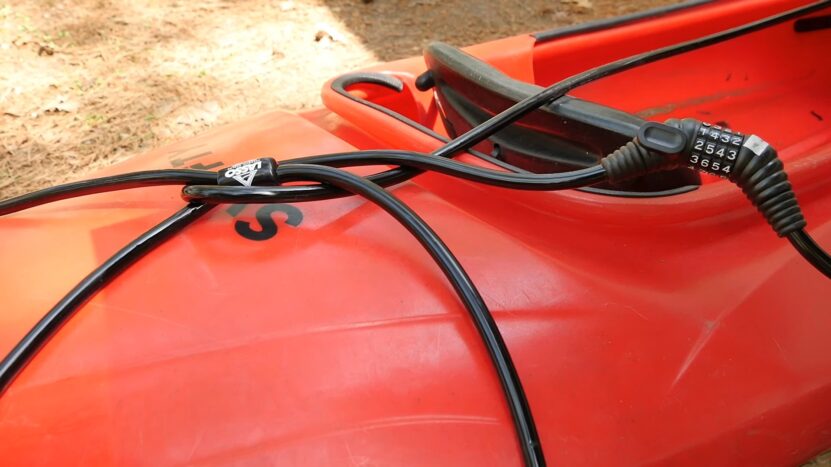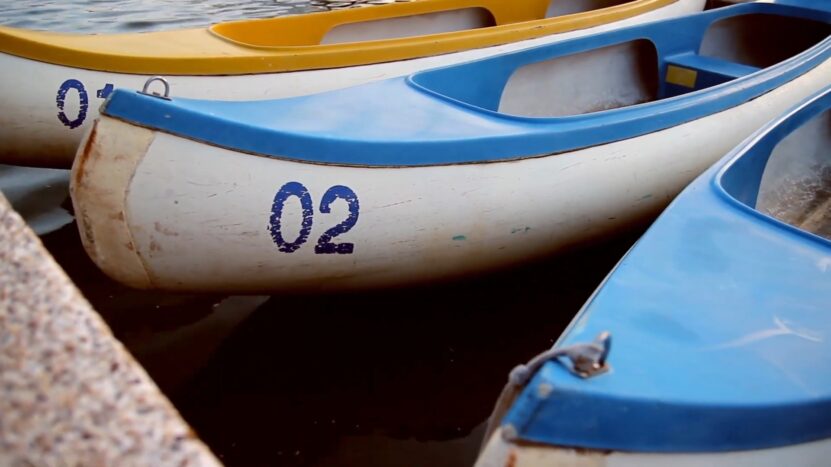Taking care of the things we own is prevalent, because how else is it supposed to last us for a long time and allow us to create new memories? The more expensive and unique the item or commodity, the more difficult and important it is to securely stash it and protect it. With kayaks, it is all about locking them up the right way. As a kayaker, it is important to take steps to ensure the ultimate safety of your kayak. Kayak theft is a common concern, especially in areas where kayaking is popular which practically means just about any recreational body of water. To help prevent your kayak from being stolen, it is important to properly lock it up when you are not using it.
How to Do It?

Locking your kayak is an important step to take in order to protect it from theft. The right kind of lock can make all the difference when it comes to keeping your kayak secure, and there are a few different things that you should consider when selecting one. It is important to choose a lock that is strong enough to resist tampering and hard enough to withstand harsh weather conditions, as well as one that is easy for you to use. Of course, it should be resistant to corrosion, but also blunt force because thieves usually try to break the locks if they cannot pick them.
Additionally, you should think about where you will be using the lock and what type of environment it will be exposed to. Is it close to your home, on your property, or far away where you do not go unless you plan to kayak? With this in mind, this critical introduction will explore the various options available for locking your kayak, offering advice on how best to choose a suitable lock for your needs.
One way to do this is to use a high-quality lock or cable to secure your kayak to a fixed object, such as a dock or a tree. Make sure the lock or cable is made of a material that is difficult to cut or break. If you are storing your kayak on land, consider using a locking kayak storage rack or a locked storage shed to keep it safe. If you are storing your kayak on the water, consider a locking kayak hoist or pulley system to lift it out of the water and keep it out of reach of potential thieves.

Another important tip is to always lock your kayak when you are not using it, even if you are just leaving it alone for a few minutes. If you have a removable kayak seat, you should really be taking it with you when you leave your kayak unattended. This can make it more difficult for someone to steal your kayak as they cannot paddle away comfortably. Take out any other gear too, especially the paddle.
It is also a good idea to register your kayak with your local authorities or a kayak registry program. This can help identify your kayak if it is stolen and recovered. Additionally, always make sure to follow any local laws and regulations regarding the proper storage and securing of kayaks in your area. By following these tips, you can help protect your kayak from theft by locking it up correctly. Doing so ensures that you can enjoy it for years to come and have it by your side no matter what.
Other Safety Concerns for Kayakers
Security in terms of protecting the vessel from theft is not the only trouble that can happen when kayaking. There are other concerns as well, the most common being capsizing, hypothermia, and dehydration.
Capsizing is when a kayak flips over, and it can happen for a variety of reasons, such as strong and unpredictable winds, waves, or improper kayaking techniques. Capsizing can be especially dangerous if it occurs in cold water or if the kayaker is not wearing a life jacket. It is the worst when the kayaker does not know how to behave and what to do to prevent it.
Hypothermia is a condition that occurs when the body loses heat faster than it can produce it, leading to a dangerously low body temperature. In kayakers, hypothermia can be caused by exposure to cold water or air, especially in cold weather or cold water conditions. Capsizing usually leads to hypothermia if not handled on time.
Dehydration happens when the body loses more fluids than it takes in and it can be dangerous for kayakers because they may not realize they are dehydrated until it is too late. Dehydration can come from a variety of factors. It could include too much sweating, not drinking enough water, or not eating enough food.
Other common safety concerns for kayak owners include sunburns, insect bites, and getting lost. To help prevent these and other safety concerns, kayakers should always apply sunscreen and insect repellents, wear appropriate safety gear such as a life jacket and a hat and follow proper kayaking safety guidelines.
Conclusion and Takeaways
As you can see, it is definitely not easy to be a kayaker especially when it comes to worrying about all the security and safety issues that can arise from it. Simply owning a kayak is enough for you to worry about because it is an expensive commodity you need to protect when not using it. Most kayakers only get to use their vessel a few times per year, once a month at the most. Serious paddlers do it more often but even they spend more time storing it than using it.
Locking it up in a safe space and providing it with proper security is the only way to keep it safe. Make no mistake, thieves and burglars know that kayaks are worth the effort and they will target yours if it is not locked up and stored away properly. To prevent this from happening to you, use a strong lock, be careful where you tie up your kayak, and be warry who knows about it? Keep your keys secure too and make sure the lock you are using is easy to use and not one of those overly complicated ones that cause problems instead of helping.
Read also this article if you want to learn more about average kayak speed.

